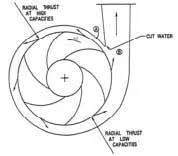Mobile:+86-311-808-126-83
Email:info@ydcastings.com
austenitic stainless steel castings
A Comprehensive Overview of Austenitic Stainless Steel Castings
Austenitic stainless steel castings represent a pivotal segment of modern materials engineering, accounting for a significant portion of the cast metal products used in various industries. Known for their excellent mechanical properties, corrosion resistance, and formability, austenitic stainless steels have become a go-to choice for many applications, particularly in environments where resistance to extreme conditions is paramount.
Composition and Characteristics
Austenitic stainless steels contain a high alloy content, predominantly of chromium (typically 16-26%) and nickel (6-22%). The main feature that distinguishes austenitic stainless steels from other types, such as ferritic or martensitic stainless steels, is their face-centered cubic (FCC) crystal structure, which is stable at all temperatures. This structure is responsible for the excellent ductility and toughness exhibited by these materials.
In addition to chromium and nickel, austenitic stainless steels may also include elements like molybdenum, manganese, and nitrogen, which help enhance specific properties, such as pitting resistance and strength. The most commonly used grades in casting applications include 304 and 316, with 316 offering improved corrosion resistance due to the presence of molybdenum.
Casting Process
The casting of austenitic stainless steels involves several methods, including sand casting, investment casting, and die casting, among others. Each method has its advantages and limitations
1. Sand Casting This traditional method is suitable for producing large components and is known for its versatility. However, it may have limitations regarding surface finish and dimensional accuracy.
2. Investment Casting Also known as precision casting, this process allows for the creation of complex shapes with a high degree of accuracy and a superior surface finish. It is particularly advantageous for small to medium-sized parts.
3. Die Casting This method is used for high-volume production of smaller components. However, the elevated temperatures involved in treating austenitic stainless steels pose challenges that need to be managed carefully.
austenitic stainless steel castings

The choice of casting method largely depends on factors such as the complexity of the part, production volume, and required material properties.
Applications
The versatility of austenitic stainless steel castings allows them to be utilized across a wide range of industries. In the food and beverage sector, for instance, their corrosion resistance makes them ideal for equipment and storage tanks. The chemical processing industry relies heavily on austenitic stainless steels for pumps, valves, and reactors that are subjected to corrosive chemicals.
Moreover, in the oil and gas sector, these castings play a critical role in rig components and piping systems due to their durability and resistance to harsh environments. Aerospace and automotive applications also benefit from the lightweight and strong properties of austenitic stainless steels, contributing to fuel efficiency and performance.
Benefits and Challenges
The primary benefits of using austenitic stainless steel castings include their outstanding resistance to corrosion, oxidation, and thermal deterioration, making them suitable for high-temperature applications. Their ability to maintain strength at elevated temperatures further enhances their appeal for critical applications.
However, challenges such as higher initial costs and the potential for carbide precipitation during welding can affect their usability in certain contexts. Careful consideration of design and processing parameters is essential to mitigate these issues, ensuring optimal performance and longevity.
Conclusion
In summary, austenitic stainless steel castings play an integral role in modern manufacturing and engineering disciplines. Their unique combination of properties provides solutions for challenging applications across diverse industries. As advancements in casting technologies and alloy compositions continue to evolve, austenitic stainless steel castings will likely expand their applications, reinforcing their importance in sustainable and innovative engineering solutions.
-
Understanding Metal Casting TechniquesNewsApr.02,2025
-
Understanding Exhaust Manifolds for Enhanced Engine PerformanceNewsApr.02,2025
-
The World of Metal FabricationNewsApr.02,2025
-
Key Components for Pump and Turbo EfficiencyNewsApr.02,2025
-
Essential Tools for Automotive Maintenance and RepairNewsApr.02,2025
-
Durable Valve Components for Effective Water ManagementNewsApr.02,2025











